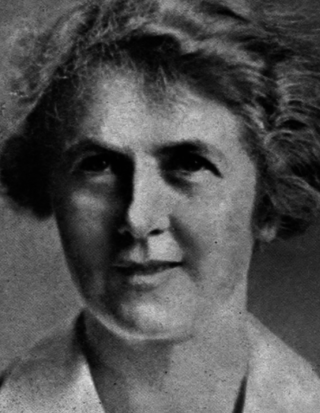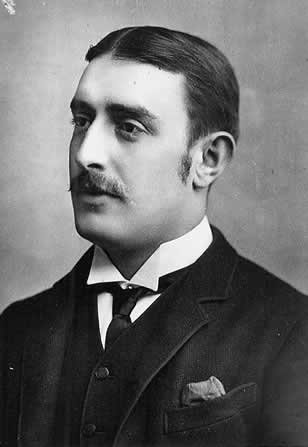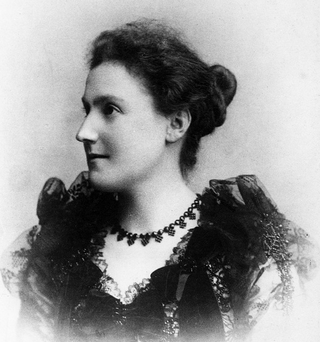William Roy | |
|---|---|
 | |
| Born | 1911 |
| Died | 1977 |
| Occupation | Spiritualist medium |
William Roy (1911-1977) was the pseudonym of William George Holroyd Plowright, a notorious fraudulent medium in the history of British spiritualism. [1] [2]
William Roy | |
|---|---|
 | |
| Born | 1911 |
| Died | 1977 |
| Occupation | Spiritualist medium |
William Roy (1911-1977) was the pseudonym of William George Holroyd Plowright, a notorious fraudulent medium in the history of British spiritualism. [1] [2]
Roy was born in Cobham, Surrey. He married Mary Castle, a nightclub owner, in London when he was seventeen years old. During the 1930s, his wife died and he remarried. He set up in business as a spiritualist medium. Roy's second wife, Dorothy, committed suicide. Three weeks after her death, Roy married Mary Rose Halligan. Roy had rich clients and lived in expensive style. He separated from his third wife in 1956. [2]
Several small biographies have been written about Roy; these appear in Egon Larsen (1966), Simeon Edmunds (1966) and Melvin Harris (2003). [1] [3] [4]

Roy used technical devices for his fraudulent mediumship and employed hidden accomplices. He concealed a microphone and recorded the conversations of the sitters before his séances. [4] Roy was exposed as a fraud in 1955. According to Lewis Spence:
When people wrote to ask if they could attend his séances, Roy researched at the registry of births, deaths, and marriages in order to obtain detailed information about their relatives. When they visited his house for a sitting, they would be asked to leave their bags and coats outside the séance room. These were searched by a confederate for letters, tickets, bills, or other scraps of personal information. All the facts concerning sitters were recorded in a detailed card index system, and cleverly worked into Roy's "psychic" messages during séances. [5]
His "direct voice" mediumship was a clever microphone relaying technique. The "spirit" voices were made in an adjoining room by his accomplice who spoke into a microphone or played tape recordings. [3] The wires from the microphone ran through the wall and under the carpet of the séance room and attached to a hearing aid on Roy's wrist. The hearing aid had been adapted into a miniature speaker. [3]
In 1958, Roy published his confessions on how he had tricked his séance sitters and issued photographs of the trick-apparatus that he had used in the Sunday Pictorial newspaper. These appeared in five installments, titled "A Shocking Confession of How William Roy Cheated His Way to Fame as a Spiritualist Medium". [1]
He admitted that he had earned over £50,000 from his séance sitters. [6] Despite his confessions Roy continued to operate as a fake medium under the name "Bill Silver" until his death. [7]
Roy's apparatus for his fraudulent mediumship is now contained at Scotland Yard, in a museum at the Metropolitan Police Detective Training School. [2]

The Society for Psychical Research (SPR) is a nonprofit organisation in the United Kingdom. Its stated purpose is to understand events and abilities commonly described as psychic or paranormal. It describes itself as the "first society to conduct organised scholarly research into human experiences that challenge contemporary scientific models." It does not, however, since its inception in 1882, hold any corporate opinions: SPR members assert a variety of beliefs with regard to the nature of the phenomena studied.

Spiritualism is a social religious movement popular in the nineteenth and early twentieth centuries, according to which an individual's awareness persists after death and may be contacted by the living. The afterlife, or the "spirit world", is seen by spiritualists not as a static place, but as one in which spirits continue to interact and evolve. These two beliefs—that contact with spirits is possible, and that spirits are more advanced than humans—lead spiritualists to the belief that spirits are capable of advising the living on moral and ethical issues and the nature of God. Some spiritualists follow "spirit guides"—specific spirits relied upon for spiritual direction.

The National Laboratory of Psychical Research was established in 1926 by Harry Price, at 16 Queensberry Place, London. Its aim was "to investigate in a dispassionate manner and by purely scientific means every phase of psychic or alleged psychic phenomena". The honorary president was Lord Sands, K.C., LL.D., acting president was H. G. Bois, and the honorary director was Harry Price. In 1930 the Laboratory moved from Queensberry Square, where it had been a tenant of the London Spiritualist Alliance to 13 Roland Gardens. In 1938, its library was transferred on loan to the University of London.

Harry Price was a British psychic researcher and author, who gained public prominence for his investigations into psychical phenomena and exposing fraudulent spiritualist mediums. He is best known for his well-publicised investigation of the purportedly haunted Borley Rectory in Essex, England.

Mediumship is the practice of purportedly mediating communication between familiar spirits or spirits of the dead and living human beings. Practitioners are known as "mediums" or "spirit mediums". There are different types of mediumship or spirit channelling, including séance tables, trance, and ouija. The practice is associated with spiritualism and spiritism. A similar New Age practice is known as channeling.

Eusapia Palladino was an Italian Spiritualist physical medium. She claimed extraordinary powers such as the ability to levitate tables, communicate with the dead through her spirit guide John King, and to produce other supernatural phenomena.

Mina 'Margery' Crandon was an American psychic medium who performed under the stage name 'Margery' and claimed to channel her dead brother, Walter Stinson. Investigators who studied Crandon concluded that she had no such paranormal ability, and others detected her in outright deception. She became known as her alleged paranormal skills were touted by Sherlock Holmes author Sir Arthur Conan Doyle and were disproved by magician Harry Houdini. Crandon was investigated by members of the American Society for Psychical Research and employees of the Scientific American.

In spiritualism, ectoplasm, also known as simply ecto, is a substance or spiritual energy "exteriorized" by physical mediums. It was coined in 1894 by psychical researcher Charles Richet. Although the term is widespread in popular culture, there is no scientific evidence that ectoplasm exists and many purported examples were exposed as hoaxes fashioned from cheesecloth, gauze or other natural substances.

Rudi Schneider, son of Josef Schneider and brother of Willi Schneider, was an Austrian Spiritualist and physical medium. His career was covered extensively by the Journal of the American Society for Psychical Research, and he took part in a number of notable experiments conducted by paranormal researchers/debunkers, including Harry Price, Albert von Schrenck-Notzing and Eric Dingwall. Some of these researchers declared him to be a fraud while others were unable to find evidence of trickery.
The American Society for Psychical Research (ASPR) is the oldest psychical research organization in the United States dedicated to parapsychology. It maintains offices and a library, in New York City, which are open to both members and the general public. The society has an open membership, anyone with an interest in psychical research is invited to join. It maintains a website; and publishes the quarterly Journal of the American Society for Psychical Research.
Estelle Roberts was a British Spiritualist medium.
Gustav Geley was a French physician, psychical researcher and director of the Institute Metapsychique International from 1919 to 1924.

Hereward Carrington was an American investigator of psychic phenomena and author. His subjects included several of the most high-profile cases of apparent psychic ability of his times, and he wrote over 100 books on subjects including the paranormal and psychical research, conjuring and stage magic, and alternative medicine. Carrington promoted fruitarianism and held pseudoscientific views about dieting.

George Valiantine (1874–1947) was an American direct voice medium who was exposed as a fraud.

William Eglinton (1857–1933), also known as William Eglington was a British spiritualist medium who was exposed as a fraud.

Einer Nielsen (1894–1965) was a Danish physical medium and spiritualist.

Francis Ward Monck was a British clergyman and spiritualist medium who was exposed as a fraud.

Rosina Thompson was a British trance medium.

Count Mikhail Mikhailovich Perovsky-Petrovo-Solovovo was a Russian diplomat, psychical researcher and skeptic.

Thomas Everitt (1823–1905) and Mrs Thomas Everitt (1825–1915) were prominent British spiritualists.